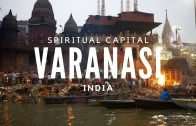Jaipur – Royal capital of India
Jaipur is often called the Pink City in reference to its distinctly colored buildings, which were originally painted this colour to imitate the red sandstone architecture of Maugham cities.
Jaipur is the largest city in Rajasthan and was built in the eighteenth century by Sawai Jai Singh as India‘s first planned city. It belongs to the tourist Golden Triangle of Delhi, Jaipur, and Agra. It hosts several attractions like the City Palace, Govind Dev ji Temple, Vidhan Sabha, Birla Temple, several massive Rajput forts and so on.
Go on an orientation crafts & heritage walking tour by tuk-tuk, e-rickshaw, and foot. Explore busy craft bazaar, Iswari Minar Swarga Sal, view local artisans at work like bangle makers, gold and silver casters, gemstone traders, etc. Walkthrough local markets of the city and view beautiful Rajasthani dresses, jewellery, turbans, handicrafts items and artisans like turban makers, flower and perfume sellers.
Visit the sprawling City Palace, a superb marriage of the Rajput and Mughal styles of architecture. The seven-storied Chandra Mahal (Moon Palace) is a sprawling complex with multiple courtyards, public buildings, astronomical observatory and zenana mahals (harems).
From the City Palace, you enter the extraordinary “Jantar Mantar”, the astronomical observatory built by Raja Sawai Jai Singh II in 1827. Roughly translated the name means “The Formula of Instruments”. This is one of five observatories he built in northern India.
Amber Fort, the former capital of royal Jaipur. Few fail to be moved by the dramatic Rajput grandeur of this hilltop fortress-palace 11 km north of Jaipur. Set on the dry wrinkled Aravalli Hills and surrounded by fortified battlements, the palace straddles two tundra hills overlooking Maota Lake and its sprawling crenellated walls lattice the surrounding hills. History of this architectural masterpiece with its mirror-studded alcoves, dazzling mosaics and water-cooled swings that delight today’s visitors as they did their former royal residents.

History
Jaipur gets its name from its founder Maharaja JaiSingh II (1693-1744) the great warrior and astronomer. He came to power at the age of 11 on the death of his father. Ruling from the magnificent Amber Fort which they built and the city around the Amber fort to serve as his capital, and the city was named Jaipur, after himself.
After Jai Singh’s death in 1744, his sons squabbled for power and without a monarch, the kingdom became open to invasion and neighbouring Rajput states and the Marathas usurped large areas of the kingdom. The core, however, remained part of the kingdom, which lasted during British times.
As with the Mughals, Jaipur maintained good relations with the British and during the war of independence in 1857 remained loyal to the Raj. Yet, the British gradually began to undermine the independence of the state and exercised greater control over the administration.
In 1876, Maharaja Ram Singh painted the entire city pink, traditionally a colour associated with hospitality, to welcome the Prince of Wales (later King Edward VII) to the city. The tradition has been maintained and today all residents in the old city are compelled by law to preserve the pink colour. Jaipur got the nickname of the pink city.

After independence, Jaipur merged with the states of Jodhpur, Jaisalmer, and Bikaner to form the state of Rajasthan. In 1956, Jaipur became the capital of the state of Rajasthan.
Forts

Amber Fort, This massive fort-palace complex built in hybrid Hindu-Muslim style dates back to Raja Man Singh and was the royal palace of the Kachwahas from c. 1600-1727. The fort is named after the town of Amber, named after the goddess Amba. The main sights within the fort include the Sheesh Mahal, adorned with thousands on thousands of mirror tiles on the walls and ceiling.
Jaigarh Fort never conquered in battle, this was considered the strongest of the three forts in the area. It is best known as the site of the world’s largest cannon, the Jaivana, which was test-fired only once — according to legend, despite using only half the design amount of gunpowder, the cannonball flew 35 km!
Nahargarh Fort, The smallest of the three forts, notable primarily for excellent views over Man Sagar lake and the vast sprawl of Jaipur. The fort houses the compact Madhavendra Bhawan palace.

Palaces
City Palace, (Inside the old city, close to New Gate and Hawa Mahal). An imposing blend of traditional Rajput and Mughal architecture. It is a vast palace complex occupying nearly one-seventh of the Pink City. It was originally built by Maharaja Jai Singh II. The complex is divided into a series of courtyards, sprawling gardens, and buildings. It is home to several palatial structures like the Chandra Mahal, Mubarak Mahal (housing a textile museum), Diwan-e-Khas (or Hall of Private audience housing the two largest silver vessels in the world, which are duly mentioned in the Guinness book), the Diwan-e-Aam ( or Hall of Public Audience) and the gateway Ridhi Sidhi Pol (with four small doorways decorated with motifs depicting the four seasons).
Jal Mahal (Water Palace), a Rajput style architectured palace sits in the center of the Mansarovar lake. The lake is often dry in the winter, but summer monsoons frequently turn it into a beautiful lake filled with water hyacinths.
Temples
Govind Devji Temple – For Vaishnavites, particularly followers of Lord Krishna, this is the most important temple in the world after Vrindavan. Lord Krishna presiding in the temple were brought to Jaipur from Vrindavan during Mughal reign. According to popular legend, Lord Krishna’s idol in the temple looks exactly like Krishna’s form while his incarnation of Earth. It is located at Jainiwas Gardens, Jalebi Chowk, in the same campus as City Palace.
Moti Doongri temple is located in the center of Jaipur city. This Temple is the main center of religion for Jaipur people. Moti Dungri temple is dedicated to Lord Ganesha and it is said that at the time of building this city, this temple was constructed first to protect the city.
Lakshmi Narayan Temple (aka The Marble Temple) (Birla Temple). A temple made of white marble with beautiful carvings. It covers a vast area in Jaipur city and is built in a contemporary manner. Birla Temple is completely constructed with the finest high-quality white marbles.
Akshardham Temple (at Vaishali Nagar)
Jain Mandir (Shivdas Pura) 15-16 km from Jaipur, is a Jain temple in Shivdaspura and is well known as “Bara Padampura”. This temple comes under district Jaipur. Temple is a unique place of miracles and is famous in the north for its very beautiful statue of God Padamprabhu (The 6th Teerthankar for Jain’s). God is sitting in a crossed leg seating posture. Height of the statue is 2 ft 4″ and the statue is made of pure white stone. Statue appeared while digging for the foundation of a house.
Galwh Bagh (aka The Monkey Temple) and Suriya Mandir (aka The Sun Temple) are located on the Eastern edge of the city. Both locals and tourists come here to feed the surprisingly tame monkeys, use the temples, and enjoy the views.
Monuments
Jantar Mantar, This UNESCO world heritage site is the largest of five astronomical observatories built by Maharaja Jai Singh during the period 1727-1734 in north India. The observatory consists of fourteen major geometric devices (or yantras in Hindi) for measuring time, predicting eclipses, tracking stars in their orbits, ascertaining the declinations of planets and determining the celestial altitudes, etc.
Hawa Mahal (Palace of Breeze). Built-in 1799 by Maharaja Sawai Singh as part of City Palace. It was an extension of the Zenana (women) chamber. Its purpose was to allow royal ladies to observe everyday life in the street below without being seen. It is a five-story high red sandstone structure complete with over 950 windows. The breeze (or hawa in Hindi) circulates through these windows giving the palace its name.
Gaitore (Gatore), (In the walled city area named Brahmpuri, the foothills of Nahargarh Fort). This is a royal cremation site of the royal rulers of Jaipur.















